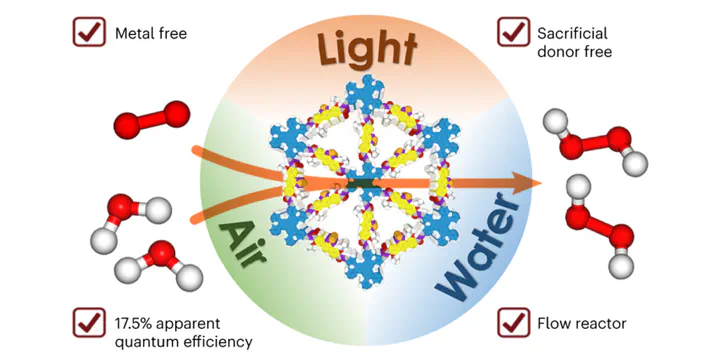Linkage-engineered donor–acceptor covalent organic frameworks for optimal photosynthesis of hydrogen peroxide from water and air
 Image credit:
Image credit:Abstract
Charge transfer and mass transport to catalytic sites are critical factors in photocatalysis. However, achieving both simultaneously is challenging due to inherent trade-offs and interdependencies. Here we develop a microporous covalent organic framework featuring dense donor–acceptor lattices with engineered linkages. The donor–acceptor columnar π-arrays function as charge supply chains and as abundant water oxidation and oxygen reduction centres, while the one-dimensional microporous channels lined with rationally integrated oxygen atoms function as aligned conduits for instant water and oxygen delivery to the catalytic sites. This porous catalyst promotes photosynthesis with water and air to produce H2O2, combining a high production rate, efficiency and turnover frequency. This framework operates under visible light without the need of metal co-catalysts and sacrificial reagents, exhibits an apparent quantum efficiency of 17.5% at 420 nm in batch reactors and enables continuous, stable and clean H2O2 production in flow reactors.